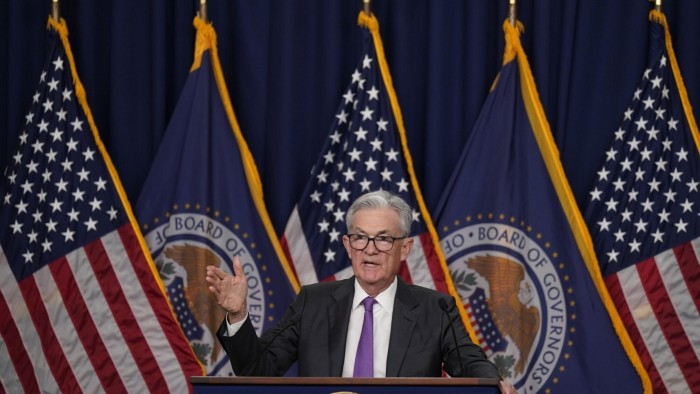The US may no longer avoid a recession


Roula Khalaf, Editor of the FT, selects her favourite stories in this weekly newsletter.
The writer is president of Queens’ College, Cambridge, and an adviser to Allianz and Gramercy
An intense period of rising interest rates, high oil prices and a stronger dollar is pushing the financial market consensus on US economic growth away from the comforting notion of a soft landing.
By my count, this will be the sixth time in the past 15 months that conventional wisdom shifts for the world’s most influential economy. It is a pivot that, unfortunately, is likely to stick for longer this time around, threatening what has been an impressively strong US economy, undermining genuine financial stability and exporting volatility to the rest of the world.
In just the last two weeks, the yield on the benchmark US 10-year bond has risen by some 0.5 percentage points to around 4.8 per cent as part of a comprehensive shift in the entire interest rate structure. The move brought the change in yields to an eye-popping 1 percentage point since the end of June, leading to higher borrowing rates for companies, more burdensome car loans for households, and more pronounced and uneven deposit outflows from the banking system as investors shift cash into money market accounts. And notably, the cost of a 30-year mortgage is about to top 8 per cent, making already expensive home purchases even less affordable.
The international spillovers from this shift include more costly and less reliable financing and, for Japan, a more complicated exit from an increasingly unsustainable monetary policy regime with knock-on effects for the US.
Pushing yields up in an increasingly disorderly manner is the combination of markets recognising that the higher policy rates set by the Federal Reserve will be here for a while, and the need to absorb a significant supply of Treasury bonds due to large budgetary deficits.
Adding fuel to this fire are high prices for oil amid solid demand, continued production cuts by Opec+ and heavily depleted inventories. There is a material risk of this leading to higher inflation for a broader range of goods and services.
These are developments that the economy and markets do not enjoy. They damp growth and increase the threat of stagflation. Financial stability risks are raised with interest rate mismatches within certain banks, the refinancing needs of other financial sector participants, and the risk of credit dislocations.
While markets are adjusting fast to higher rates, that of the real economy is at a much earlier phase with now a much bumpier road ahead.
For well over a year now, I have argued that the US is able to avoid the 2023 recession that many were repeatedly calling. I am now less confident about what’s in store for 2024 given how the recent surge in rates compounds the erosion in financial, human and institutional resilience.
My confidence is also shaken by a Federal Reserve that is yet to realise that its forward policy guidance — as well as its monetary policy framework and the way officials communicate the appropriate inflation target — need to be rapidly adapted to the reality of a changed economic paradigm.
Indeed, the world’s most influential central bank has yet to sufficiently embrace the fundamental change in the basic characterisation of the economy from a world of insufficient demand to one in which the supply sector is a lot less flexible for several years. The longer the Fed takes to adjust, the greater the risk to economic wellbeing.
Last year was about markets adjusting to central banks playing catch-up with adverse inflation realities. This year is about markets internalising the significant likelihood that rates will stay higher for longer, adding to the contractionary impetus in the pipeline. After all, as a Fed governor rightly said last week, “the most important question at this point is not whether an additional rate increase is needed this year or not, but rather how long we will need to hold rates at a sufficiently restrictive level to achieve our goals”.
At a town-hall meeting at the end of September, Fed chair Jay Powell stated: “When my colleagues and I publish our projections for the most likely path for the economy and interest rates, as we did a couple of weeks ago, one of our goals is to influence spending and investment decisions today and in the months ahead.”
If congressional dysfunction spreads further, and if the Fed continues to drag its feet on changing key underpinnings of its policy formulation, the turn in US economic surprises will not be pleasant for either the domestic economy or the rest of the world.
Comments